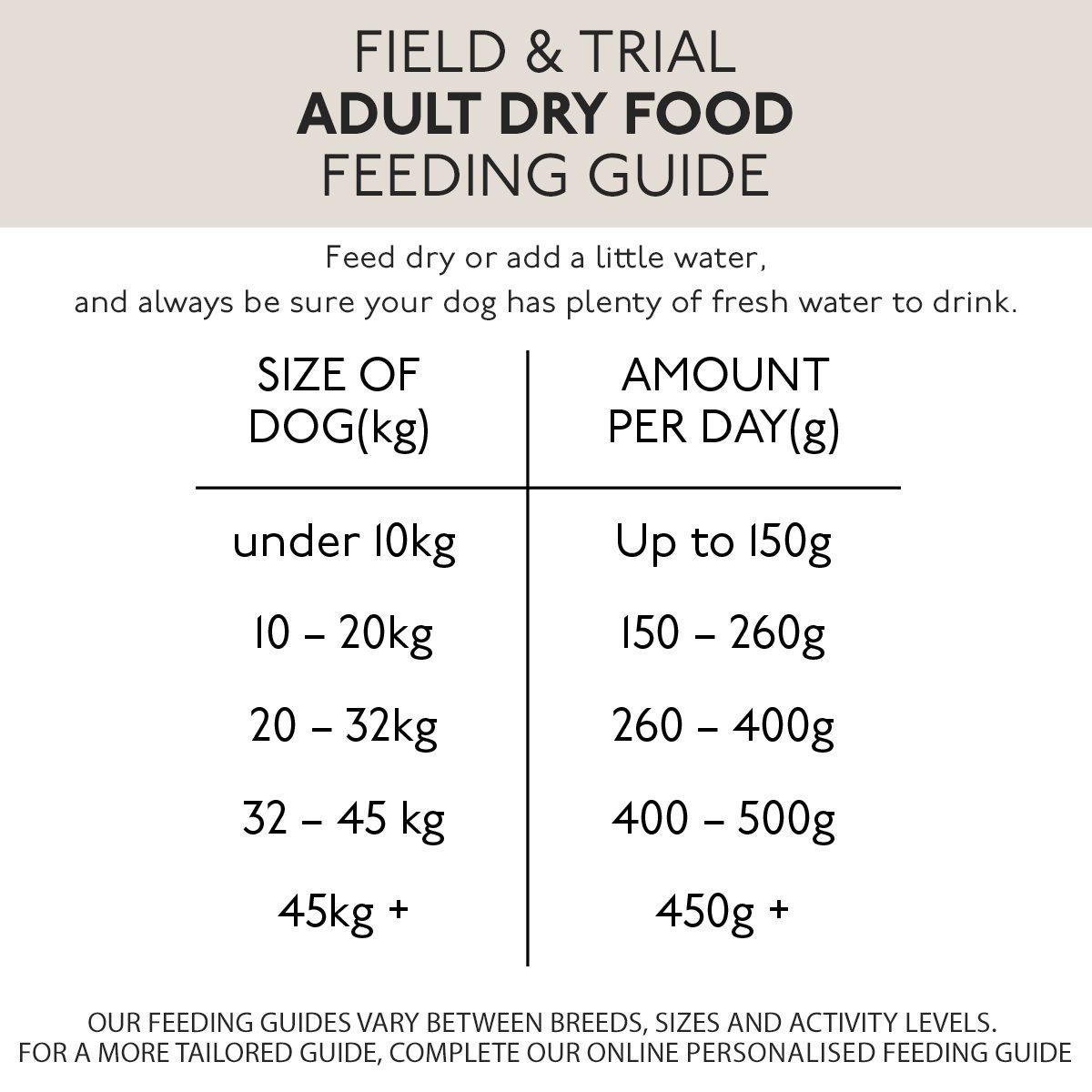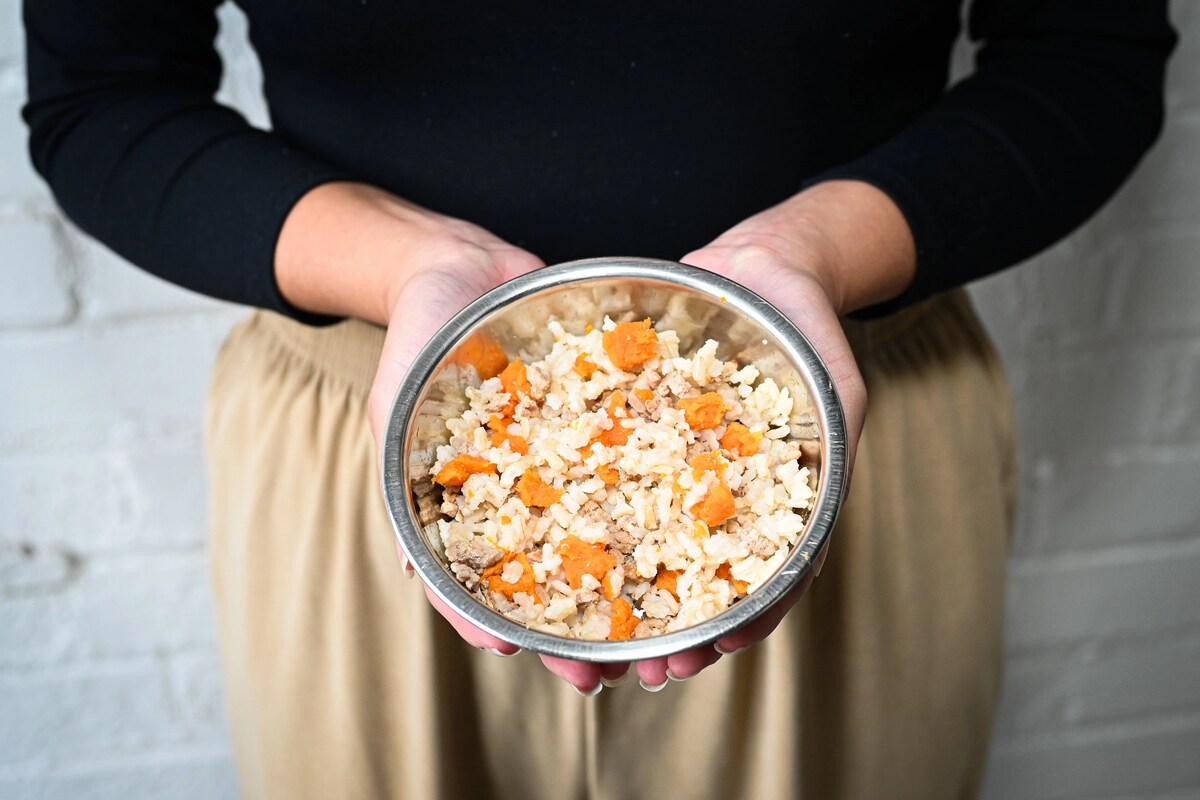To determine how much chicken and rice to feed your dog, the general guideline is to feed them a ratio of 3/4 cup of chicken to 1 cup of rice per day. This combination can be a good option for dogs with upset stomachs or digestive issues.
It’s important to ensure that the chicken is fully cooked and that no seasoning, such as salt or garlic, is added. Boiled chicken and white rice can be beneficial for dogs, but always consult with your veterinarian for specific feeding recommendations based on your dog’s weight, age, and any underlying health conditions.
Providing the right amount of food is essential for your dog’s overall well-being.

Credit: be.chewy.com
How Much Chicken And Rice Should I Feed My Dog?
When it comes to how much chicken and rice to feed your dog, the general rule is to replace their regular food with an equal amount of chicken and rice. It’s important to consider their weight, dietary needs, and consult with a veterinarian for specific recommendations.
When it comes to feeding your dog chicken and rice, it’s important to know the right amount to give them. The correct portion size ensures your furry friend gets the nutrition they need without overeating or experiencing any digestive issues. There are a few factors you should consider when determining the appropriate serving size for your dog. Additionally, we’ll discuss recommended serving sizes and how to calculate the amount of chicken and rice your dog needs, so let’s dive in!
Factors To Consider
Several factors influence the amount of chicken and rice you should feed your dog. These include their age, weight, activity level, and any specific dietary restrictions or health conditions they may have. For example, puppies and active dogs generally require more food than older, less active dogs. Similarly, dogs with certain conditions like diabetes or allergies may have specific dietary needs that impact the portion size of chicken and rice. Considering these factors will help you determine the right amount to keep your dog happy and healthy.
Recommended Serving Sizes
The recommended serving sizes for chicken and rice for dogs can vary based on their weight. Here’s a general guideline to help you understand the appropriate portions:
| Dog Weight | Chicken (cups/day) | Rice (cups/day) |
|---|---|---|
| Small (10-20 lbs) | 1/2 – 3/4 cup | 1/2 – 3/4 cup |
| Medium (20-50 lbs) | 3/4 – 1 cup | 3/4 – 1 cup |
| Large (50+ lbs) | 1 – 1 1/2 cups | 1 – 1 1/2 cups |
Remember, these are just guidelines, and it’s essential to consider your dog’s individual needs. If you’re unsure about the appropriate portion size, consult your veterinarian for personalized recommendations.
Calculating The Amount Of Chicken And Rice
Calculating the exact amount of chicken and rice for your dog may require a bit of simple math. First, determine the recommended serving sizes based on your dog’s weight. If you prefer to use a weight-to-portion ratio, a general guideline is:
- 1/2 cup of chicken per 10 pounds of body weight
- 1/2 cup of rice per 10 pounds of body weight
For example, if your dog weighs 30 pounds, you could feed them approximately 1 1/2 cups of chicken and 1 1/2 cups of rice per day. However, it’s crucial to adjust these calculations based on your dog’s specific needs and any recommendations from your veterinarian.
Remember, these calculations are just approximations, and it’s essential to monitor your dog’s weight and overall health regularly. Adjust the portion sizes accordingly if you notice any changes.
In conclusion, feeding your dog the right amount of chicken and rice is vital for their overall well-being. Consider the factors mentioned above, follow the recommended serving sizes, and adjust accordingly to ensure your furry friend stays healthy and happy!

Credit: www.skinners.co.uk
Guidelines For Feeding Chicken And Rice To Dogs
When it comes to feeding your dog chicken and rice, it is important to know how much to give them. Follow the guidelines provided to ensure proper portioning and avoid overfeeding.
Balancing Nutritional Needs
When it comes to feeding your dog a chicken and rice diet, it is crucial to balance their nutritional needs. Dogs require a balanced diet that includes a mix of proteins, carbohydrates, fats, vitamins, and minerals.
The chicken provides a high-quality source of protein while the rice acts as a easily digestible source of carbohydrates. Both components work together to provide your dog with the necessary nutrients for optimal health and energy.
It is important to note that a chicken and rice diet should not be a long-term solution for your dog’s nutrition. Consult with a veterinarian to determine how long your dog should be on this diet and to ensure they receive all the essential nutrients they need.
Introducing Chicken And Rice Into The Diet
When introducing chicken and rice into your dog’s diet, it’s essential to start gradually. Start by substituting a small portion of your dog’s regular food with chicken and rice. Monitor their reaction and observe any changes in their digestion or overall health.
Over the course of a few days, gradually increase the proportion of chicken and rice in their meals until it becomes the primary source of their diet. This slow transition allows their digestive system to adjust and minimizes the risk of any potential stomach upset.
Always ensure that the chicken is boneless, skinless, and thoroughly cooked to avoid any safety concerns or digestive issues. Additionally, avoid seasoning the chicken and rice with salt, garlic, or any other spices as they can be harmful to dogs.
Monitoring The Dog’s Health
While your dog is on a chicken and rice diet, it is crucial to closely monitor their health. Keep an eye on their energy levels, coat condition, stool consistency, and overall well-being.
If you notice any signs of gastrointestinal upset, such as diarrhea or vomiting, consult your veterinarian immediately. They can provide guidance on adjusting the chicken and rice ratio or recommend additional supplements to support your dog’s digestive health.
In conclusion, guidelines for feeding chicken and rice to dogs advise balancing their nutritional needs, introducing the diet gradually, and closely monitoring their health to ensure they are receiving the right amount of nutrients and experiencing optimal digestion.

Credit: nativepet.com
Frequently Asked Questions On How Much Chicken And Rice To Feed My Dog
How Much Chicken And Rice Should I Feed My Dog?
Feed your dog an equal amount of chicken and rice to replace their normal food. For example, if your dog normally eats 1 cup of food per meal, replace it with 1 cup of chicken and rice. Make sure the chicken is fully cooked and without seasoning.
How Much Chicken And Rice Should I Eat Per Meal?
A serving of chicken and rice per meal depends on your individual dietary needs, but a general recommendation is to have a palm-sized portion of chicken and a cup of cooked rice. Adjust the portion sizes according to your specific calorie and protein requirements.
How Much Chicken Should I Feed My Dog By Weight?
Feed your dog chicken by weight depending on its size. A general guideline is to feed about 1/2 to 3/4 cup of chicken per 10 pounds of body weight per day. Consult with your veterinarian for personalized recommendations.
Is Boiled Chicken And White Rice Good For Dogs?
Boiled chicken and white rice can be a good option for dogs with upset stomachs or digestive issues. Make sure the chicken is fully cooked and does not have any seasoning like salt or garlic.
Conclusion
Feeding your dog a balanced diet of chicken and rice is important for their overall health and well-being. Remember to consult with your veterinarian to determine the right amount of chicken and rice to feed your dog based on their specific needs and weight.
By following their guidance and providing the appropriate portions, you can ensure that your furry friend receives the necessary nutrients while maintaining a healthy weight. Remember, a well-nourished dog is a happy and thriving companion.



